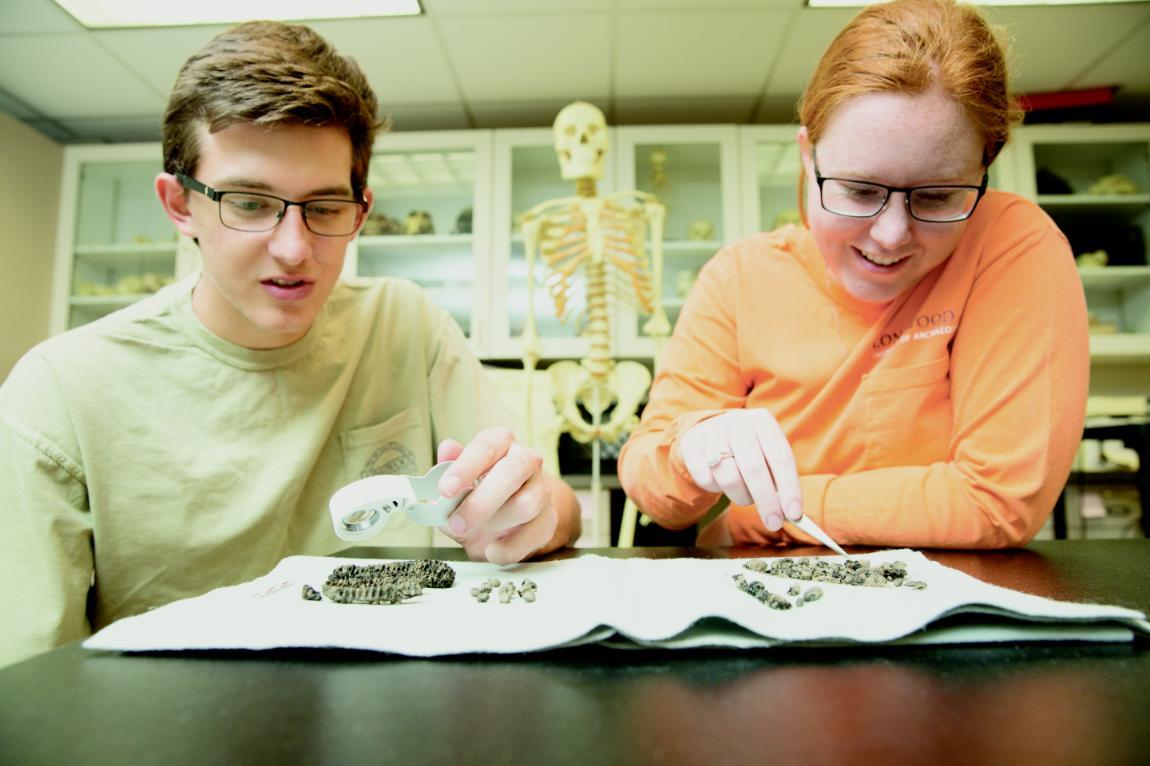Cameron Reuss ’20 (left) and Olivia Mehalko ’19 won the 2017 award for the best student paper in prehistoric archaeology from the Archeological Society of Virginia.
As Longwood students Olivia Mehalko and Cameron Reuss knelt in the dirt and carefully unearthed the remains of a 1,000-year-old Native American hearth, they came across what would seem to be a common find—the charred remains of corncobs.
It was, however, a significant archaeological find providing the first direct evidence of the cultivation of corn at the Late Woodland Indian village excavation site in Charlotte County, home to members of the Sapony tribe. The site has served as an outdoor laboratory for Longwood students for two decades.
For their find, Mehalko ’19 and Reuss ’20 were awarded the Ben C. McCary Award for best student paper in prehistoric archaeology at the Archeological Society of Virginia annual meeting in late October. Each of the students received a $500 grant from Longwood’s Office of Student Research to help fund their participation in the conference. Their winning paper was published in the Quarterly Bulletin of the Archeological Society of Virginia.
“Winning this award and getting published is both significant and exciting for Olivia and Cameron,” said Dr. Brian Bates ’92, professor of anthropology and executive director of Longwood’s Institute of Archaeology. Bates added that the discovery of the corncobs was the “first bona fide direct evidence of corn” at the site. “We had long suspected that the Sapony tribe operated as a chiefdom— a permanent settlement with multiple layers of administration—as opposed to the nomadic stereotype we often think of with Native American tribes,” he said. A chiefdom is dependent on a domesticated food supply and the ability to feed a larger population, he said.
Bates noted that previously corncob impressions had been found on pottery at the same site.
“All of the signs have been pointing to a chiefdom as the system of order, and the corn is just part of that story,” Bates said.
Finding the corncob prompted Mehalko, a junior from Quinton, and Reuss, a sophomore from Virginia Beach, to research the role of corn in the southern piedmont of Virginia and the significance of its cultivation for early populations along the Dan River.
Since 1998, Longwood students have been unearthing artifacts at the Randy K. Wade dig site at the Staunton River Battlefield State Park in Charlotte County. Mehalko and Reuss made their discovery during the summer 2017 Dr. James W. Jordan Archaeology Field School.



Leave a Comment